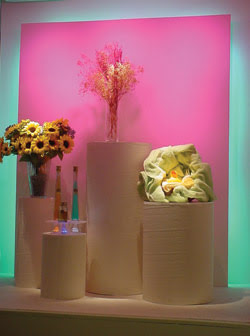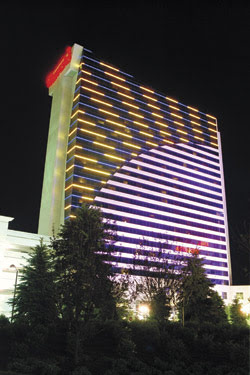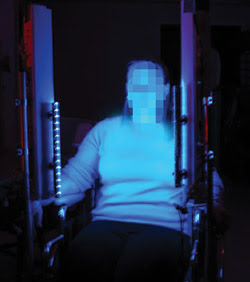Color LEDs show promise in a wide array of new applications.
Dr. Mark S. Rea, Rensselaer Polytechnic Institute
The possibility of widespread use of white-light inorganic light-emitting diodes in architectural spaces is generating a great deal of optimism in some government and industry circles. Some within those circles go so far as to predict that white LEDs will become a “disruptive technology,” completely replacing current white-light lamp technologies such as incandescent, fluorescent and metal halide within a decade.
Many from the commercial world are more cautious and await significant improvements to white LED lighting fixtures, including higher luminous efficacy, greater flux generation, longer life, better color consistency and lower cost. Other industry insiders believe that they will never be disruptive, but rather will simply be another one of the many white-light technologies used in architectural applications.
While development of these devices continues, color inorganic LEDs are already enjoying significant growth in signage and signals applications and may begin to expand into unanticipated areas of architectural lighting, where it was previously impractical to employ color or not even recognized as useful.

Figure 1. Color LEDs are used to make retail displays more appealing to customers. Courtesy of Lighting Research Center.
Decorative lighting is a rapidly growing area for color LEDs. Unlike their white counterparts, which need to generate a lot of flux to be useful as an illuminant, the color type can generate significantly less flux and still be effective for this application. The wide array of deeply saturated hues, their long life and, perhaps surprisingly, their modest flux generation make the color LED a flexible, robust technology for creative decorative lighting.
In our laboratory at Rensselaer Polytechnic Institute’s Lighting Research Center (LRC), we have shown that color LEDs can be used effectively in retail displays (Figure 1) to attract customers to products as well as to reduce electric lighting power requirements. Similarly, they have enhanced the architectural elements of building facades, bridges and monuments (Figure 2).

Figure 2. Color LEDs are increasingly used in architecture, as shown on Harrah’s Atlantic City Resort & Casino in New Jersey, for which illumination was done by Color Kinetics. Photo by Stone Mountain Lighting Group.
Color LEDs also are beginning to play an unexpected but important role in health care. Recent research has shown that light is the primary regulator of human daily rhythms and, perhaps, seasonal rhythms. The most notable daily rhythm is our sleep-wake cycle, but a “master clock” in our brain governs many other biological functions. Bright white light has been used in such diverse areas as adjusting the sleep patterns of astronauts and alleviating seasonal depression during winter.
More recent research shows that only a small portion of the visible spectrum is important for circadian regulation. Research at the LRC has demonstrated that blue light from LEDs can regulate and consolidate sleep in patients diagnosed with Alzheimer’s disease (Figure 3). The circadian system is apparently spectrally tuned to “see” blue sky, so blue LEDs become an ideal source for circadian regulation. Only modest levels of blue light need to reach the eye to be biologically effective, thus reducing electric power requirements and cost, as well as uncomfortable glare caused by bright white light.

Figure 3. This patient is undergoing light therapy using blue LEDs. Courtesy of Lighting Research Center.
More science and development must be accomplished with white LED fixtures before they will be ready to replace other light sources for general illumination in architectural spaces. Color LEDs, on the other hand, have already transformed the traffic signal and exit sign markets because they provide greater efficacy and require lower maintenance than the filtered white-light sources they replace. They are transforming signal lights in the automotive industry as well. Indeed, some believe that filament lamps will disappear from the 2006 car models.
“Filling existing sockets” with color LEDs is now viewed as an obvious solution by many OEMs in several markets. But what is even more exciting and slowly being recognized is the role that they can play in completely new markets, such as decorative lighting and health care. As color LEDs become more common, new markets for color will undoubtedly emerge in the global entrepreneurial marketplace.
Meet the author
Mark S. Rea is professor of cognitive science at Rensselaer Polytechnic Institute in Troy, N.Y., and director of the institute’s Lighting Research Center.